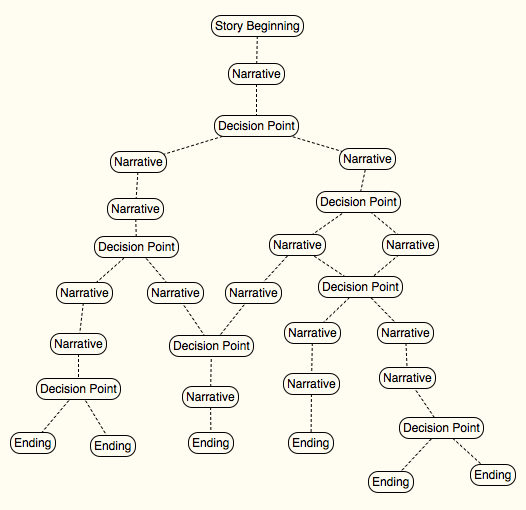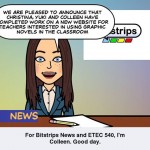Hi everyone,
A couple of opening caveats regarding my project:
1. It is presented as two versions:
Version A: a prezi based off off the research that is intended to be presented at a Department Meeting to frame and open the discussion on Digital Literacy at my school where some have been less and enthusiastic.
As such, Version A is more open ended and does not have the pointed commentary, as in Version B, that would lead to heated disagreements. Rather, Version A is intended to be a guiding framework for an open and progressive discussion.
Version B: the formal research found below.
2. I was unable to link up with anyone sharing similar interests so I struck out alone on this one and focused the project on a specific issue related to both the course and recent goings on within my district. I hope to use this prezi to advance the dialogue on Digital Literacy within my school and district.
Version A: Literacy in the 21st Century: Revision of Traditional Approaches Essential for the Future
Version B:
As a teacher of secondary English and Social Studies I am constantly involved in discussions about literacy and society’s expectations of students in relation to life after high school. With a focus on all three of these factors, and the decision by my district’s administration to incorporate provincial electronic exams (eExams) in January 2012, it is clear that traditional concepts of literacy need to evolve to include media and digital literacy to fully prepare students for not only the roles and expectations they will face in the workplace and post-secondary institutions, but also the very real and present expectations of being able to successfully navigate and engage with an eExam. Although our curriculum does not encompass these skills and concepts, we must effectively include them or we will be sending our students to life defining exams without the support and preparation they deserve.
However, not everyone agrees that eExams are a positive move forward. On a number of occasions, English and Social Studies department meetings have divided along the lines of maintaining the traditional concept of literacy and questioning the move to eExams and digital literacy. Unfortunately, those who speak most vehemently on behalf of traditional approaches tend to have little understanding of what is meant by the term digital literacy and cannot situate it within a tangible reality. Opening a discussion which references contemporary notions about digital literacy will undoubtedly broaden the depth and breadth of our local debate. Insight into what researchers are saying about the importance of digital literacy in the new millennium will help us add clarity to the concept of what literacy means today, which can only benefit our students and our professional practice(s).
“Digital Literacy”
Dobson and Willinsky (2009) consider digital literacy as a new medium for reading and writing that is an extension of the traditional concept of literacy. Ultimately, digital forms of literacy extend access to a larger audience. The authors plot the emergence of digital literacy starting with computer use in the 1980s, the rise of hypermedia in the 1990s and end with a look at the creation of a networked information economy. The result of these three stages is greater ease of writing, linking of ideas and access to knowledge. Presently, we are debating the impact of digital reading and writing when historically, this wave started some 30 years ago. In our efforts to master traditional literacy, we have neglected to recognize and adapt our concept of what it means to read and write from a societal point of view.
Dobson and Willinsky (2009) contend that in the 1980s, word processing became popular as a result of increased personal computer use. As word processing increased, so too did written communication, which had global reaches. Hypermedia, seen in programs like Hypercard, allowed the linking of writing but remained obscure as it was limited to only high end workstations. However, hypermedia did offer the opportunity to advance education by, among other things, changing teacher-centered classrooms and introducing new forms of academic writing (Dobson, 2009). It becomes apparent that as these technologies advanced, there was little education for students on how to interact and manipulate these applications to their benefit. It is not surprising then that the 1990s saw novices becoming disoriented in associated networks (Dobson, 2009). We are at the same crossroads with eExams in that our students are not being educated to the level needed to successfully take on the hyperlinking and navigation requirements of the exam, complaining of similar disorientation and confusion when seated in front of the eExam.
Interestingly, the authors consider computer-mediated-communication (CMC) in the 1990s as an exponential growth in writing. CMC includes email, listservs, internet postings, online collaboration and chats or texting. Yet, we have not embraced these forms of reading and writing as literacy and ignore them altogether in our classrooms. On the other hand, provincial eExams have included digitally published posters and email correspondence as works that students must be able to read and respond to. If we continue to stick to only paperback novels read since the time we were students, we will produce digitally illiterate students.
Finally, as the computer became an integral part of global business and education there emerged digital divides between genders, nations, economies and languages. Many of these divides persist today but their impacts have been reduced through active programs and research on the part of government, education and private agencies. Such programs include UCLA’s World Internet Program, The Digital Divide Report, MIT’s One Laptop Per Child program, Brazil’s PC Connectado to name a few. While the three stages of growth explored by Dobson and Willinsky (2009) advanced literacy in the digital age, they also reinforced the existing gap between affluent and non-affluent nations.
“Reading Redefined for a Transmedia Universe”
It is argued by Lamb (2011) that traditional definitions of reading and books no longer apply in the digital age. Reading and writing, in fact literacy as we have previously understood it, have been impacted by digital technologies and as such, we need to re-evaluate what it means to read (Lamb, 2011). Lamb proposes expanding the meaning of reading to include not just interaction with text on a page but also to create meaning from symbols. The author starts with the traditional book and explores five e-reading environments: e-books, interactive storybooks, reference databases, hypertexts and interactive fiction as well as transmedia storytelling (Lamb, 2011). With reference to a number of other studies and articles, the author presents arguments that digital reading promotes new literacy practices through a multitude of emerging technologies such as tablets and smartphones. While a number of pros emerge within these e-reading environments, it is recognized that, especially with interactive storybooks, students who choose to read in a backward or non-linear fashion, permitted by navigation arrows etc., adversely affect their recall of the story (Lamb, 2011). Aside from the clear break from the chronological reading of a story, there may be other reasons for a student’s inability to accurately recall a story. For instance, students may navigate backwards to clarify their comprehension much like flipping the pages of a regular book. However, with the multitude of navigation options available, flipping directly forward or more specifically, using hyperlinks to jump sections, may be beyond the conceptual understanding of elementary aged students. If these concepts of media and digital literacy are not taught to children as they interact with such technologies, we as educators may be setting a segment of our students up for failure. In addition to the challenges that can emerge from simply navigating through e-text are that sometimes more distracting audio and visual stimuli that can also adversely affect learning (Lamb, 2011). The variety and popularity of e-reading environments requires educators to reconsider what it means to read in the digital age.
As evidenced by our Social Studies department’s attempt to use a Grade 11 e-text, we need to do more that tell them it is available online. Our students are well versed in reading and using traditional textbooks, but e-texts introduce a number of different affordances. Not all of these new approaches were favorable to students. In addition, we did not model, scaffold and practice them. One of the downfalls we experienced was that we, the teachers, introduced the e-text but still chose to have the printed textbook in hand in class. We inadvertently highlighted that we too were not comfortable enough to use the e-text and indirectly may have passed our biases and reluctance onto our students.
“Digital Literacy Research form an International and Comparative Point of View”
From a more global perspective, we explore the impacts of the digital divide and again a consistent root cause is a lack of digital literacy. Pietrass’ intent is to outline a framework for digital literacy and argues for a more international and comparative approach that assesses national, cultural, social and age differences between users (Pietrass, 2007). What we can take from this approach is that we cannot assume our users are homogeneous even though they reside in the Western world where the assumption is that they are ‘haves’. If we fail to teach digital literacies, our students will ‘have’ access to the technologies but will become digitally illiterate, ‘have nots’.
Pietrass (2007) systematically analyses a number of factors causing the digital divide and considers the implications and assumptions of each. The author begins by citing access to the internet as a paramount contributor to the overall gap, with media education as a secondary and income, age, economics and population density as tertiary contributors (Pietrass, 2007). In the author’s theoretical framework of digital literacy, internet access is a given with a focus on instrumental-technological and normative media-education (Pietrass, 2007). With specific reference to digital literacy as a specific media literacy, the author describes common internet activity as interactivity, virtuality and hypertextuality (Pietrass, 2007) predating similar arguments by Dobson (2009). Where this study advances educational discourse is in its insistence on the need for international comparative studies. Western nations seek to use media more effectively while digital divide issues leave other less developed nations behind. In fact, a 1999 recommendation to UNESCO at the “Education for the Media and the Digital Age” conference demonstrated an international desire to raise media literacy (Pietrass, 2007). Tied closely to the international debate on improving digital literacy is also the underlying assumption that as writing is essential for using the internet, it too must be strengthened under the common banner of improving literacy. The author raises an interesting point in that not only must education focus on the student, but a successful approach must also consider educating educators of digital literacy (Pietrass, 2007).
“Technology and Child Development: Evidence from the One Laptop per Child Program”
Cristia’s (2012) study evaluated the success of the One Laptop per Child (OLPC) program, which among other things aims to improve cross curricular literacy by providing the world’s poorest regions with laptops for students. Here digital literacy inequality between the ‘haves’ and the ‘have-nots’ is technologically bridged by a Massachusetts Institute of Technology (MIT) Media Lab product which was sold for $100/unit. This large-scale, randomized study, conducted in rural Peru, utilized both qualitative and quantitative methods to explore the effects of an intensive introduction of computers at school and home in comparison to isolated communities with low baseline access to technology (Cristia, 2012). In addition, the authors referenced other studies that explored OLPC programs in Nepal and Uruguay by way of identifying the value of previous work in the same field while indicating the differences to be explored in their research. The study explored education in Peru reporting only 17% of second grade students achieving the required standard on national standardized tests (Cristia, 2012).
The sample included 319 rural schools, 209 treatments and 110 controls and the study took place 15 months after the implementation of OLPC (Cristia, 2012). The numerous achievement tests, for Math and Language, and cognitive test, as well as questionnaires and interviews determined that OLPC program students did not demonstrate any statistically significant improvements in Math and Language but did show improvements in general cognitive skills (Cristia, 2012). The surprising lack of positive results in Math and Language were analyzed and attributed in part to two principles of the OLPC program which were not followed in many cases. Foremost, some students were not permitted to take the laptops home, as intended by the OLPC program, for fear of financial responsibility, on the part of the parents and school administration, in cases of theft or damage. Of secondary importance was the OLPC program’s reliance on Internet access for some of its applications. In rural Peru, Internet access could not be guaranteed (Cristia, 2012). This study advances the discussion of effective uses of technology in cross curricular literacy while highlighting the downfalls of programs that depend heavily on Internet access.
Of relevance to us is that we are statistically, 1.5 – 2%, below the provincial exam average in English and have been for at least the past 6 years. We have all participated in meetings scheduled by administration asking the tough question – Why? While no one is suggesting that the answer is poor teacher, we need to consider what we are and are not teaching. Somewhat like the Peruvian example, a number of our schools are within a relative ‘have-not’ category. We have seen the inclusion of an e-text in Social Studies 11 lead to no significant gains. Are we making similar assumptions to our Peruvian colleagues? The tablets and laptops that were purchased to increase technology use in the classrooms definitely did increase access to technology. But, the tech stays at school for reasons similar to the OLPC in Peru and only those 8 classrooms close to the wireless hubs have strong, dedicated wireless access. Those are not the same 8 classrooms where the laptops and tablets were placed. We made assumptions that simply having the technology would solve our challenges when there are other factors we overlooked.
“Digital Literacies: Web 3.0, Litbots, and TPWSGWTAU”
In an attempt to predict the future based on the rate and direction of the present, McEneaney (2011) frames literacy as even more evolved than simply what reading is and how we read. He proposes that in a Web 3.0 era, digital literacies will change who we consider a reader.
The author plots Web 1.0 as a high-tech bulletin board. He sees Web 2.0 as more social tool that made posting content easier. In fact, he claims that in a Web 2.0 world, we all became writers and readers (McEneaney, 2011). In the next stage, Web 3.0, he advances that notion that literary robots (litbots) will become readers and writers. The inclusion of litbots does not mean the exclusion of human readers and writers but rather the interaction of both humans and robots to aid and refine the web experience. With references to existing technology used by Amazon.com and Google, McEneaney (2011) illustrates that litbots would read and remember our actions and searches on the web. In essence, Web 3.0 would see litbots working tirelessly to refine and personalize our individual web experience.
While only time will tell if McEneaney futuristic hypothesis is correct, he does explore a thought provoking aspect of literacy. By thinking of reading and writing in terms of only humans as producers and consumers, the related in/output is limited by any and all aspects of the digital divide. So while computers and the internet have allowed the exponential growth of literacy argued by Dobson (2009) above, the potential explosion of reading and writing that could be done by litbots for humans, without human direction, is astounding. The social, cultural and ethical ramifications alone are complicated and exciting all at the same time.
Conclusion
The emerging message is clear. As technology advances and becomes more intertwined in our daily lives, without similar advances in digital literacy education we run the risk of widening existing digital divides both globally and locally, while leaving individuals digitally illiterate, confused, non-contributing members of society. Presently governments, institutions, administrators and educators need to expand traditional definitions of literacy to include digital approaches. In addition, considering the influence of the internet and technology, future research and education needs to focus on international comparisons to determine the next individual steps of schools, provinces and nations toward closing these digital divides. Promoting digital literacy is the direction forward.
 And, as promised, here is a map of our CYOA project (if you’re curious):
And, as promised, here is a map of our CYOA project (if you’re curious):



